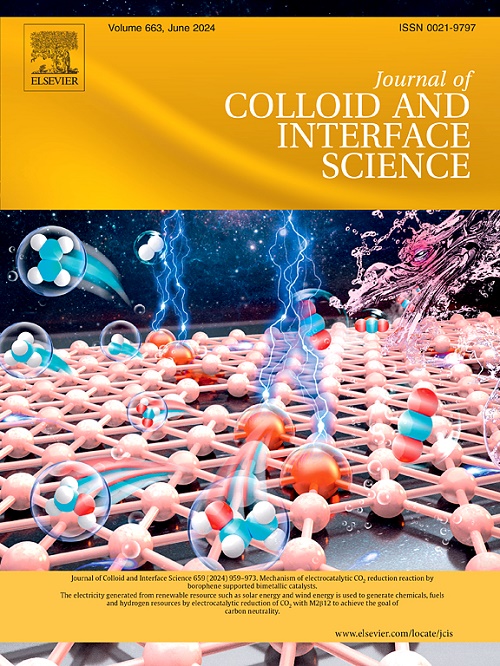Tailoring the special hole transfer layer between BiVO4 and oxygen evolution co-catalysts interfaces for boosting photoelectrochemical water splitting
IF 9.4
1区 化学
Q1 CHEMISTRY, PHYSICAL
引用次数: 0
Abstract
Tailoring the hole transport layer (HTL) between BiVO4 (BVO) and oxygen evolution co-catalysts (OECs) interfaces is a leading strategy to improve the performance of photoelectrochemical (PEC) water splitting. Nevertheless, the limited driving force at the BVO/OECs interfaces severely hinders the transport of charge carriers. In this study, we designed a specialized defective transition metal oxide (Vo-MnOx) as the HTL. The integrated photoanode (BVO/Vo-MnOx/CoFe(OH)x) exhibits an impressive photocurrent density at 1.23 V vs. RHE, along with an outstanding ηsurface value of 91.91 %. These remarkable outcomes are due to the fact that Vo-MnOx as HTL effectively enhances the interface driving force and charge migration ability, which is largely attributed to the ability of Vo to accumulate electrons and accelerate rapid cyclic transitions of multivalent Mn. Satisfactorily, microscopic perspective studies reveal that the distinctive Vo-MnOx can efficiently promote photogenerated charge transfer, as shown in dynamic carrier analysis using scanning photoelectrochemical microscope (SPECM). Additionally, the oxygen evolution reaction model suggests that a defective HTL can improve surface catalytic kinetics. This work provides valuable insights into the role of Vo in regulating the valence state changes in PEC water splitting.

求助全文
约1分钟内获得全文
求助全文
来源期刊
CiteScore
16.10
自引率
7.10%
发文量
2568
审稿时长
2 months
期刊介绍:
The Journal of Colloid and Interface Science publishes original research findings on the fundamental principles of colloid and interface science, as well as innovative applications in various fields. The criteria for publication include impact, quality, novelty, and originality.
Emphasis:
The journal emphasizes fundamental scientific innovation within the following categories:
A.Colloidal Materials and Nanomaterials
B.Soft Colloidal and Self-Assembly Systems
C.Adsorption, Catalysis, and Electrochemistry
D.Interfacial Processes, Capillarity, and Wetting
E.Biomaterials and Nanomedicine
F.Energy Conversion and Storage, and Environmental Technologies

 求助内容:
求助内容: 应助结果提醒方式:
应助结果提醒方式:


